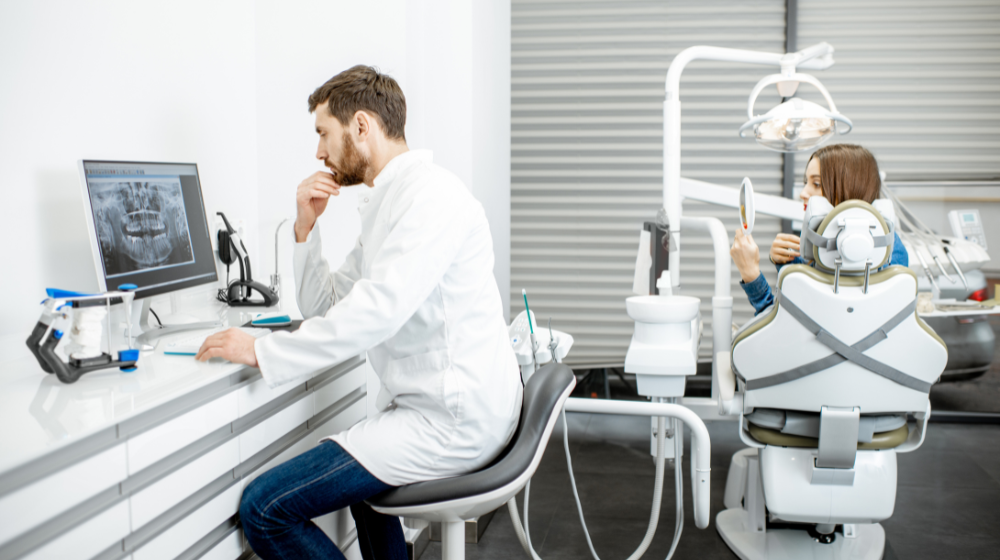The Pressure on Dental Providers Today
Dental providers are under more pressure than ever. Between clinical responsibilities and administrative overload, it often feels like the patient in the chair is no longer the primary focus. Charting, documentation, and insurance tasks all compete for attention that should belong to patient care.
That’s where AI tools in dentistry can help. Used well, AI does not replace your role—it restores it. It gives time back, reduces clicks, and helps you reconnect with what matters most: your patients.
The Hidden Cost of Admin Time
Administrative work has quietly taken over the dental day. Documentation and insurance-related tasks eat up hours each week. The cost is not just financial—it’s also emotional and relational. Every minute spent at a screen is time not spent with the person in the chair.
A 2024 study found that providers using AI to support documentation saw a 33% reduction in time spent on notes, saving 2-3 hours per provider per day with no loss in quality. Further research published in the Romanian Journal of Oral Rehabilitation echoes this, showing that AI-assisted workflows save up to 40 minutes daily, allowing for more patient interaction.
These are not small gains. They represent the opportunity to be more present, more attentive, and more effective.
AI That Understands Your Voice—and Your Workflow
AI does not need to change how you practice. It needs to work with how you already operate. One of the most transformative applications is voice-to-note and voice-to-charting technology.
Research published in ACM Transactions on Computer-Human Interaction describes this collaboration between AI and clinician as a co-author relationship. AI listens, transcribes, and structures your words into accurate clinical notes or odontograms while you focus on treatment, not typing.
This lets your hands do what they were trained for. AI captures your expertise in the background while you stay engaged at the forefront.
AI Doesn’t Replace. It Reconnects.
Some worry that AI may depersonalize care. But in practice, the opposite is often true. AI has shown it can analyze natural language feedback from patients with near-human accuracy. It gives practices new insights into how patients feel and where they need support.
AI can also support preventive, sustainable care by reducing unnecessary interventions and improving scheduling through data-driven insights.
The common thread: when AI does the background work, providers can return to what they do best, providing care.
Dental AI Isn’t Just a Buzzword
AI in dentistry is not about automating providers out of the picture. It is about returning time, attention, and human connection to the center of care. The right technology does not compete with clinical skill. It supports it. It gives your practice breathing room. It gives your team better tools. And it gives your patients a more present, more focused provider.
Extensive research across dental and healthcare fields suggests that the most promising use of AI is not in replacing human care but in amplifying it. The data confirms what many providers intuitively know: connection matters. Empathy matters. Time matters. And the best innovations are the ones that make more room for all three.
At Curve Dental®, we are not layering AI onto existing workflows as a buzzword. We are investing deeply in building it into the core of your practice management system so that it works naturally with how you already operate. We believe AI should enhance your impact, not disrupt your day.
Want to see how Curve is bringing this to life? Book a demo today.
References
-
Bossen, C., & Pine, K. H. (2023). ACM Transactions on Computer-Human Interaction.
-
van Buchem, M. M., et al. (2022). BMC Medical Informatics and Decision Making.
-
Ducret, M., et al. (2022). Journal of Dentistry.


